Overseas Guests

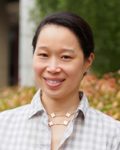



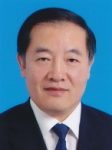
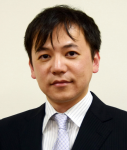


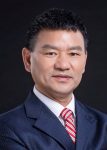

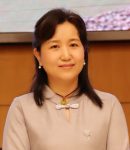

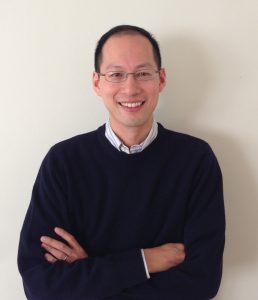
Christopher J. CHANG
Class of 1942 Chair Professor of Chemistry
University of California, Berkeley, USA
Chris Chang is the Class of 1942 Chair Professor of Chemistry and Molecular and Cell Biology at the University of California, Berkeley. He earned his B.S./M.S. degrees at Caltech, working with Harry Gray, was a Fulbright Scholar with Jean-Pierre Sauvage, and finished his Ph.D. at MIT with Dan Nocera, followed by postdoctoral studies with Steve Lippard. Research in the Chang laboratory is focused on the study of metals in biology and energy.
University of California, Berkeley
Email: chrischang@berkeley.edu
Title
Transition Metal Signaling and Metalloallostery: Bioinorganic Chemistry Beyond Active Sites
Metals are essential nutrients that are required to sustain all forms of life, and the traditional study of metals in biology is in the context of metalloprotein active site cofactors for structure and/or catalytic purposes. We are advancing a new paradigm of transition metal signaling, where essential metals like copper and iron can serve as dynamic signals for biology by binding to metalloallosteric sites to regulate protein function beyond conventional active sites. This talk will focus on our latest work in developing activity-based sensing probes for tracking dynamic transition metal pools and characterization of downstream targets that influence fundamental behaviors such as eating and sleeping.
References
- Bruemmer, K. J.; Crossley, S. W. M.; Chang, C. J. “Activity-Based Sensing: A Synthetic Methods Approaches for Selective Molecular Imaging and Beyond”, Chem. Int. Ed. 2020, 59, 13734–13762.
- Copper is an endogenous modulator of neural circuit spontaneous activity”, Dodani, S. C.; Firl, A.; Chan, J.; Nam, C. I.; Aron, A. T.; Onak, C. S.; Ramos-Torres, K. M.; Paek, J.; Webster, C. W.; Feller, M. B.; Chang, C. J. Natl. Acad. Sci. USA 2014, 111, 16280-16285.
- “Copper regulates cyclic-AMP-dependent lipolysis”, Krishnamoorthy, L.; Cotruvo Jr., J. A.; Chan, J.; Kaluarachchi, H.; Muchenditsi, A.; Pendyala, V. S.; Jia, S.; Aron, A. T.; Ackerman, C. M.; Wander Wal, M. N.; Guan, T.; Smaga, L. P.; Farhi, S. L.; New, E. J.; Lutsenko, S.; Chang, C. J. Nature Chem. Biol. 2016, 12, 586-593.
- “In vivo bioluminescence imaging reveals copper deficiency in a murine model of nonalcoholic fatty liver disease”, Heffern, M. C.; Park, H. M.; Au-Yeung, H. Y.; Van de Bittner, G. C.; Ackerman, C. M.; Stahl, A. Chang, C. J. Natl. Acad. Sci. USA 2016, 113, 14219-14224.
- “Redox-based reagents for chemoselective methionine bioconjugation”, Lin, S.; Yang, X.; Jia, S.; Weeks, A. M.; Hornsby, M.; Lee, P. S.; Nichiporuk, R. V.; Iavarone, A. T.; Wells, J. A.; Toste, F. D.; Chang, C. J. Science 2017, 355, 597-602.
- “Copper regulates rest-activity cycles through the locus coeruleus-norepinephrine system”, Xiao, T.; Ackerman, C. M.; Carroll, E. C.; Jia, S.; Hoagland, A.; Chan, J.; Thai. B.; Liu, C. S.; Isacoff, E. Y.; Chang, C. J. Nature Chem. Biol. 2018, 14, 655-663.
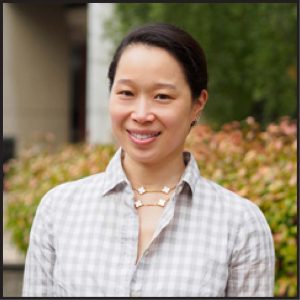
Michelle C. CHANG
Professor of Chemistry
University of California, Berkeley, USA
- Professor of Chemistry
- B.S., Biochemistry, B.A., French Literature, University of California, San Diego (1997)
- National Science Foundation Predoctoral Fellow (1997-2000)
- M.I.T./Merck Foundation Predoctoral Fellow (2000-2002)
- Ph.D. Massachusetts Institute of Technology (2004)
- Jane Coffin Childs Postdoctoral Fellow, University of California, Berkeley (2004-2007)
- Camille and Henry Dreyfus Foundation New Faculty Award (2007)
- Arnold and Mabel Beckman Foundation Young Investigator Award (2008)
- Technology Review TR35 Young Innovator Award (2008)
- BayBio Rising Star Award (2008)
- NSF CAREER (2009)
- Agilent Early Career Award (2010)
- Hellman Foundation Faculty Award (2010)
- American Chemical Society-Sociedade Brasileira de Química Young Talents in Science Award (2011)
- NIH New Innovator Award (2011)
- DARPA Young Faculty Award (2012)
- Iota Sigma Pi Agnes Fay Morgan Award (2012)
- Paul Saltman Award in Bioinorganic Chemistry (2013)
- 3M Young Faculty Award (2013)
- Camille Dreyfus Teacher-Scholar Award (2013)
- Arthur Cope Scholar Award (2015)
- Pfizer Award in Enzyme Chemistry (2016)
University of California, Berkeley
Email: mcchang@berkeley.edu
Title
Discovery and Engineering of Radical Halogenases
Nature has developed biosynthetic routes to the production of a wide range of small molecules. We have been exploring the biosynthesis of a terminal alkyne amino acid made by soil bacteria. and its application to bioorthogonal chemistry [1]. This pathway includes several bioinorganic enzymes that carry out unusual transformations of amino acids. One of these enzymes has allowed us to identify a new family of BesD radical halogenases that work on simple amino acid substrates. This family has allowed us to find members with differing substrate selectivity and regioselectivity, enabling the engineering of pathways to make various products such as heterocycles, diamines, α-ketoacids, and peptides [2].
References
- J.A. Marchand, M.E. Neugebauer, M.C. Ing, C.-I. Lin, J.G. Pelton, and M.C.Y. Chang, Nature 2019, 567, 420-424.
- M.E. Neugebauer, K.H. Sumida, J.G. Pelton, J.L. McMurry, J.A. Marchand, and M.C.Y. Chang, Nat. Chem. Biol. 2019, 15, 1009-1016.

Gilles GASSER
Professor
Paris Sciences et Lettres University, France
Prof. Gilles Gasser started his independent scientific career at the University of Zurich as a Swiss National Science Foundation (SNSF) Ambizione Fellow before obtaining a SNSF Assistant Professorship in 2011. In 2016, Gilles moved to Chimie ParisTech, PSL University (Paris, France) to take a PSL Chair of Excellence. Gilles was the recipient of several fellowships and awards including the Alfred Werner Award from the Swiss Chemical Society, an ERC Consolidator Grant, the Thieme Chemistry Journal Award, the Jucker Award for his contribution to cancer research and recently the European BioInorganic Chemistry (EuroBIC) medal. Gilles’ research interests lay in the use of metal complexes in different areas of medicinal and biological chemistry.
Chimie ParisTech, PSL University, CNRS, Institute of Chemistry for Life and Health Sciences, Laboratory for Inorganic Chemical Biology, 75005 Paris, France
Title
Metal Complexes in Medicinal Chemistry
Metal complexes are currently playing a tremendous role in medicine.1 For example, the platinum complex cisplatin and its derivatives oxaliplatin and carboplatin are employed in more than 50% of the treatment regimes for patients suffering from cancer!
Over the last years, our research group focused its attention on the development of novel metal complexes as imaging and therapeutic agents against cancer and parasitic diseases.2-7 During this talk, we will present our latest results, including in vivo results, on these topics…
References
- Boros, P. J. Dyson and G. Gasser Chem, 2020, 6, 41-60.
- W. Heinemann, J. Karges and G. Gasser Acc. Chem. Res., 2017, 50, 2727-2736
- Patra and G. Gasser Nature Rev. Chem., 2017, 1, 0066, and references therein.
- Notaro and G. Gasser Chem. Soc. Rev., 2017, 46, 7317-7337.
- Patra, K. Zarschler, H.-J. Pietzsch, H. Stephan and G. Gasser, Chem. Soc. Rev., 2016, 45, 6415-6431.
- C. Ong, S. Roy, P. C. Andrews and G. Gasser, Chem. Rev., 2019, 119, 730-796.
- M. Brandt, J. Cardinale, M. L. Aulsebrook, G. Gasser and T. L. Mindt, J. Nucl. Med., 2018, 59, 1500-1506.
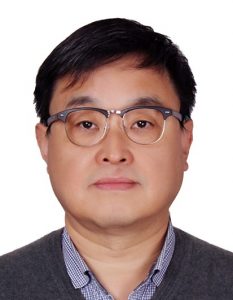
Zijian GUO
Professor
Nanjing University, China
Prof. Zijian Guo is a professor of chemistry at the Nanjing University. He received his PhD degree from the University of Padova, Italy in 1994. He joined the School of Chemistry and Chemical Engineering at Nanjing University since 1999 and served as the dean of the school and the director of the State Key Laboratory of Coordination Chemistry. He was elected to the fellow of the Chinese Academy of Sciences in 2017.
Nanjing University
Email: zguo@nju.edu.cn
Title
Towards the Rational Design of Platinum Anticancer Agents
Platinum-based anticancer drugs play an important role in the treatment of various malignancies such as colorectal and testicular cancers. However, drug resistance and side effects are challenging problems that hinder their wider clinical applications. Chemical biology approaches could be applied for elucidating the mechanism of action of different platinum anticancer drugs, and provides important tools for understanding the biological effects of platinum anticancer complexes in cellular energy conversion, metabolism and apoptosis.
In this lecture, I will focus on the molecular design of platinum-based antitumor complexes with multi-specific targeting potentials. These results demonstrated that in addition to DNA binding, bio-energetic pathways may also play crucial roles in the antitumor activity of mitochondrion-targeted platinum complexes. The combination of chemotherapy and immunotherapy in one molecule offers potential superiority for the treatment of triple negative breast cancer. A label-free comparative proteomic study was performed to profile the protein post-translational modifications using Pt-DNA probes was also developed. in biology and medicine…
References
- Jin, S.X., Muhammad, N., Sun, Y.W., Tan, Y.H., Yuan, H., Song, D.F., Guo, Z.J.*, Wang, X.Y.* Angew. Chem. Int. Ed., 2020, doi.org/10.1002/ange.202011273.
- Wang, X.X., Hu, Y., Mo, J.B., Zhang, J.Y., Wang, Z.Z., Wei, W., Li, H.L., Xu, Y., Ma, J., Zhao, J.,* Jin, J.*, Guo, Z.J* Angew. Chem. Int. Ed., 2020, 5189-5196.
- Zhang, S.R. Zhong, X.M., Yuan, H., Guo, Y., Song, D.F., Qi, F., Zhu, Z.Z., Wang, X.Y.*, Guo, Z.J.* Chem. Sci., 2020, 11, 3829-3835.
- Wang K., Zhu, C.C., He, Y.F., Zhang, Z.Q., Zhou, W., Muhammad, N., Guo, Y., Wang, X.Y., Guo, Z.J.* Angew. Chem., Int. Ed., 2019, 58, 4638-4643.
- Xue, X.L., Qian, C.G., Fang, H.B., Liu, H.K., Yuan, H., Guo, Z.J.*, Bai, Y., He, W.J.* Angew. Chem. Int. Ed., 2019, 58, 12661-12665.
- Wang, X.H. Wang, X.Y.*, Jin, S.X., Muhammad, N., Guo, Z.J.,* Chem. Rev., 2019, 119, 1138-1192.
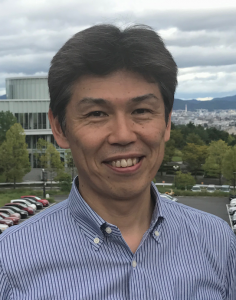
Itaru HAMACHI
Professor
Kyoto University, Japan
Prof. Itaru Hamachi obtained PhD in Kyoto University and became an assistant professor (1988), associate professor (1992) and then a full professor of Kyushu University in 2001. He then moved to Kyoto University in 2005. He was a CREST investigator of two different projects for 10 years and now ERATO research director on Molecular Technology for Neuroscience, all of which are financially supported by JST. Research Fields: Chemistry for multimolecular crowding biosystems, Supramolecular materials, Chemical biology
Department of Synthetic Chemistry and Biological Chemistry, Kyoto University,
ERATO/JST, Katsura Kyoto, Japan
Title
Analysis and Control of Proteins Function in Cells by Coordination Chemistry
Live cell, a fundamental of all living systems, consists of many different types of molecules whose size, structure, property, and function are diverse. My group has been interested in protein molecules, in particular, and challenged to create new chemistry applicable to the multi-molecular crowding conditions such as live cells, in order to decipher and control the structures and function of endogenously expressed proteins. We originally developed Ligand-directed (LD) chemistry which for selective labeling of endogenous protein in live cells, which is now extended to a useful tool for proteome analysis in a particular class (such as zinc-rich conditions) of proteins. We also utilized coordination chemistry for the functional regulation of membrane-receptor proteins in live cell systems, by combination of site-directed mutagenesis and a designer metal complex (one of the chemogenetics approaches). Here, I would like to discuss recent progress of my group in these research directions.
References
- Kiyonaka, S.; Kubota, R.; Hamachi, I. et.al., Nature Chem., 8, 958-967 (2016).
- Miki, T.; Hamachi, I. et.al., Nature Methods, 13, 931-937 (2016).
- Kiyonaka, S.; Hamachi, I. et.al., Nature Commun., 8, 14850 (2017).
- Tamura, T. and Hamachi, I. , J. Am. Chem. Soc., 141, 2782-2799 (2019).
- Kubota, R.; Hamachi, I. et.al., ACS Cent. Sci., 4, 1211-1221 (2019).
- Lee, S.; Nishikawa, Y.; Hamachi, I.; Chang, C., J. Am. Chem. Soc., 142, 14993-15003 (2020).
- Zhu, H,; Hamachi, I. et.al., J. Am. Chem. Soc., 142, 15711-15721 (2020).
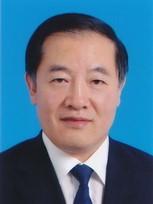
Guibin JIANG
Professor
Chinese Academy of Sciences, China
Professor Guibin Jiang is currently a professor at the Research Center for Eco-Environmental Sciences, the Chinese Academy of Sciences (CAS). Professor Jiang is currently Director of State Key Lab of Environmental Chemistry & Ecotoxicology,Research Center for Eco-Environmental Sciences. From 2006, he was formally appointed the Associate Editor of Environmental Science and Technology (ES&T). His research interesting is pollutant analysis and toxicology, including analytical methods, environmental process, toxicology and health effects of heavy metals, persistent organic pollutants, emerging chemicals, and nano-materials, etc.
Research Center for Eco-Environmental Sciences, Chinese Academy of Sciences
Email: hsun@hku.hk
Title
Characterization of Metal Pollutions in Organism
Metal pollutions are one of the major environmental factors leading to ecological risks and adverse effects on human health. For example, lead is a neurological and cardiovascular toxicant, being responsible for around 1.5% of annual global deaths. When entering an organism, metal pollutions mostly exist in a status of non-free ion, either coordinating with ligand, forming colloid, or condensing as particles. Systematic and comprehensive characterization of their forms in complex biological matrix are the key step towards elucidation of their ecological risks or adverse health effects on molecular level. Here, our recent advance in method development on characterization of metal and metal-based pollutions in biological samples as well as their application will be present.
References
- Lu D, Nat Commun 2020, 11, 2567.
- Wu Q, ACS Nano 2020, 14, 12828-12839.
- Liu L, Trend Anal Chem 2020, 129, 115953.
- Chen B, Trend Anal Chem 2020, 126, 115875.
- Shi J, Anal Chem 2020, 92, 622-627.
- Wang F, J Am Chem Soc 2019, 141, 14043-14047.
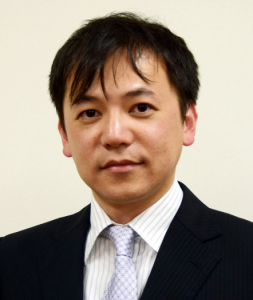
Kunihiko NISHINO
Professor
Osaka University, Japan
Academic Qualifications
2003 Ph.D. Pharmaceutical Science
2003 Graduate school of Pharmaceutical Science, Osaka University, Japan
Postdoctoral Training
2003-2005 JSPS (Japan Society for the Promotion of Science) Postdoctoral Fellow
2003-2005 Washington University School of Medicine in St. Louis, USA
Academic Appointments
2005-2007 Research Associate, Osaka University
2007-2009 Assistant Professor, Osaka University
2009-2015 Associate Professor, Osaka University
2015-present Professor, Osaka University
Institute of Scientific and Industrial Research, and Graduate School of Pharmaceutical Sciences, Osaka University, Japan
Email: nishino@sanken.osaka-u.ac.jp
Title
Function and Regulation of Bacterial Multidrug Efflux Pumps
Multidrug efflux is an obstacle to the successful treatment of infectious diseases, and it is mediated by multidrug efflux pumps that recognize and export a broad spectrum of chemically dissimilar toxic compounds. Many bacterial genome sequences have been determined, allowing us to identify drug efflux genes encoded in the bacterial genome. By the postgenomic approach, we have identified drug efflux genes and their regulatory networks in Gram-negative bacteria. Multidrug efflux pumps are often regulated by environmental signals and they are required for bacterial virulence in addition to multidrug resistance. They are also required for bacterial resistance to metals. It is now understood that these efflux pumps also have physiological roles. We investigated the physiological roles of drug efflux pumps in virulence. Because multidrug efflux pumps have roles in bacterial drug resistance and virulence, we propose that drug efflux pumps have greater clinical relevance than previously considered.
References
- Zwama, M., A. Yamaguchi, and K. Nishino. (2019) Phylogenetic and functional characterisation of the Haemophilus influenzae multidrug efflux pump AcrB. Biol. 2, 340.
- Yamasaki, S., R. Nakashima, K. Sakurai, S. Baucheron, E. Giraud, B. Doublet, A. Cloeckaert, and K. Nishino. (2018) Crystal structure of the multidrug resistance regulator RamR complexed with bile acids. Rep. 9, 177.
- Yamasaki, S., E. Nikaido, R. Nakashima, K. Sakurai, D. Fujiwara, I. Fujii, and K. Nishino. (2013) The crystal structure of multidrug-resistance regulator RamR with multiple drugs. Commun. 4, 2078.
- Nikaido, E., A. Yamaguchi, and Nishino. (2008) AcrAB multidrug efflux pump regulation in Salmonella enterica serovar Typhimurium by RamA in response to environmental signals. J. Biol. Chem. 283, 24245-24253.
- Nishino, K., L. Tammy, and E. A. Groisman. (2006) Virulence and drug resistance roles of multidrug efflux systems of Salmonella enterica serovar Typhimurium. Mol. Microbiol. 59, 126-141.

Elizabeth M. NOLAN
Ivan R. Cottrell Professor of Immunology
Massachusetts Institute of Technology, USA
Professor Nolan is a Professor of Chemistry at the Massachusetts Institute of Technology. Her research group investigates the bioinorganic chemistry of the host-microbe interaction and infectious disease. She is a recipient of a NIH New Innovator Award a NSF CAREER Award, the 2016 Eli Lily Award in Biological Chemistry from the American Chemical Society, and a 2017 Presidential Early Career Award in Science in Engineering (PECASE). For her contributions as an educator, Liz was awarded the 2016 MIT School of Science Teaching Prize for Graduate Education.
Department of Chemistry, Massachusetts Institute of Technology
Email: lnolan@mit.edu
Title
Metal Sequestration by Calprotectin and Consequences on Microbial Physiology
Most microbial pathogens have a metabolic iron requirement, necessitating the acquisition of this nutrient in the host. In response to pathogen invasion, the human host limits iron availability to starve pathogens of this nutrient. Canonical examples of nutritional immunity are host strategies that limit pathogen access to Fe(III). In contrast, little is known about how the host restricts access to another biologically relevant oxidation state of this metal, Fe(II). This redox species is prevalent at certain infection sites and is utilized by bacteria during chronic infection. Human calprotectin (CP, S100A8/S100A9 or MRP8/MRP14 heterooligomer) is an abundant metal-sequestering innate immune protein that utilizes an unusual hexahistidine (His6) site to coordinate multiple nutrient metal ions in the divalent oxidation state. We describe the Fe(II)-binding properties of CP, and report that CP inhibits iron uptake and induces an iron starvation response in Pseudomonas aeruginosa by sequestering Fe(II) at the His6 site. We show that, under aerobic conditions in which the Fe(III) oxidation state is favored, Fe(II)-withholding by CP was enabled by (i) its ability to stabilize this redox state in solution and (ii) the production and secretion of redox-active phenazines by P. aeruginosa which reduce Fe(III) to Fe(II). Analyses of the interplay between P. aeruginosa secondary metabolites and CP indicated that Fe(II) withholding alters P. aeruginosa physiology and expression of virulence traits. This work implicates CP-mediated Fe(II) sequestration as a component of nutritional immunity in both aerobic and anaerobic milieus during P. aeruginosa infection.

Thomas V. O’HALLORAN
Morrison Professor of Chemistry
Northwestern University, USA
Dr. Thomas O’Halloran directs an interdisciplinary research program involving chemical synthesis, analytical chemistry, biochemistry, molecular biology and cell biology as the Charles E. and Emma H. Morrison Professor in the Department of Chemistry and in the Department of Molecular Biosciences and Proferssor of Medicine in the Department of Medicine, Division of Hematology/Oncology in the Feinberg School of Medicine at Northwestern University. He is the Founding Director of the Chemistry of Life Processes Institute (CLP), where he leads teams of interdisciplinary biomedical researchers. This Institute brings together researchers from the fields of chemistry, biology, physics, engineering, medicine, proteomics, nanobiotechnology, molecular therapeutics and biological molecular imaging. Within CLP, he is the Faculty Advisor to the Quantitative Bio-element Imaging Center (QBIC). He is also the Senior Advisor to the Director of the Robert H. Lurie Comprehensive Cancer Center of Northwestern University.
Director, The Chemistry of Life Processes Institute, Department of Chemistry and Department of Molecular Biosciences, Northwestern University, 2145 Sheridan Road, Evanston, IL 60208-3113
Email: t-ohalloran@northwestern.edu
Title
Microbial Copper Physiology: Allosteric mechanisms controlling Compartmentalization, Resistance and Pathogenicity
Tight-binding metalloenzymes account for many of the transition metal binding sites within a cell. It is increasingly apparent that metals bound in regulatory, trafficking and compartmentalized homeostasis sites play central roles in cellular physiology. We have made inductive arguments that the steady-state concentration of free copper ions is vanishingly low in the bacterial cytosol; however, this is not necessarily so in other compartments where thermodynamically distinct pools of metal ions may undergo changes in response to cellular signals. While copper inducible genes that encode metal trafficking functions are now apparent in pathogenicity islands associated with copper and silver resistance (Staehlin et al, Genome Biol. Evol. 2016), the underpinning molecular mechanisms remain poorly understood. This talk will focus on two copper-responsive bacterial metalloregulatory system, the cue and cus regulons, which control expression of a network of copper transport proteins, several of which are encoded in pathogenicity islands in enteric bacteria.
The best understood of these receptors, CueR, responds to changes in copper concentrations in the zeptomolar range for Cu(I). Recent structural and mechanistic studies of several metalloregulatory proteins reveal novel biophysical mechanisms for transduction of the signal as well as the molecular basis for the remarkable thermodynamic sensitivity of these metal-sensing molecular switches. Cu(I) binding induces a switch in the conformation of CueR converting it from a repressor to an activator of transcription. Structural characterization of the CueR/DNA/RNAP transcription complex (Feng et al., Nature Chem. Bio., 2020) reveals that the switching mechanism requires extensive remodeling of the stereochemistry of DNA into an A-like conformation, which makes the promoter a better substrate for RNAP without recourse to interactions between the transcription factor and polymerase.
The cue and cus regulons ultimately control copper compartmentalization in a striking manner. X-ray fluorescence microscopy (XFM) and tomography studies frozen-hydrated bacterial cells at APS allow the assembly of two- and three-dimensional maps of multiple elements, including P, S, K, Ca, and Cu on. These types of single cell metallomic studies reveal that copper homeostasis involves asymmetric modification of microbial compartments and support a model in which copper chemistry is restricted to the cell envelope, particularly the periplasmic space. Thus, emerging physical methods are providing strong support for models of copper physiology and set the stage for understanding the roles of this metal in pathogenicity.

Weihong TAN
Professor
Hunan University, China
Professor Weihong Tan earned his Ph.D. in physical chemistry at the University of Michigan in 1993. He is the director of the State Key Laboratory of Chemo/Biosensing and Chemometrics and distinguished professor of chemistry and biology at Hunan University. He is also the director of the Institute of Cancer and Basic Medicine, Chinese Academy of Sciences and the dean of the Cancer Hospital of the University of Chinese Academy of Sciences. He served as a University Distinguished Professor and a V.T. and Louis Jackson Professor at the University of Florida for more than 20 years.
Professor Tan’s research is in the general area of bioanalytical chemistry, molecular medicine and chemical biology. He specializes in aptamer research, DNA nanotechnology, and cancer theranostics. He has published over 700 peer-reviewed scientific papers. According to Thomson Reuters, he is among the small, prestigious group of Highly Cited Researchers for the period between 2014-2019. The total citations of his publications exceed 70,000 with an H index of 144. He is currently an associate editor for JACS (Journal of American Chemical Society). He has received over thirty awards and honors, including the Beckman Young Investigator Award in 1997, the Pittcon Achievement Award in 2004, the AAAS Fellow in 2005, the ACS Florida Award in 2012, the Award in Spectrochemical Analysis from the American Chemical Society in 2018, the Prize for Scientific and Technological Progress, Ho Leung Ho Lee Foundation in 2018, the Ralph Adams Award for Bioanalytical chemistry in 2019 and The Pittsburgh Analytical Chemistry Award in 2019. Prof. Tan has also been recognized as an Academician of the Chinese Academy of Sciences in 2015, Academician of the World Academy of Sciences in Developing Countries in 2016, and Member of the European Academy of Science in 2019.
Hunan University, Institute of Cancer and Basic Medicine, Chinese Academy of Sciences, Cancer Hospital of the University of Chinese Academy of Sciences
Email: tan@hnu.edu.cn
Title
The Foundation of Molecular Medicine: A Chemical Biology Approach
A full understanding of the molecular basis of diseases depends on the development of molecular probes able to recognize disease targets of interest. Until very recently, such tools have been absent from the clinical practice of medicine. The newest molecular probe, and one that holds most promise, is a new class of designer nucleic acids, termed aptamers, which are single-stranded DNA/RNA able to recognize specific targets, such as single proteins and even small molecules. Recently, we applied a simple, fast and reproducible cell-based aptamer selection strategy called Cell-SELEX which uses whole, intact cells as the target for aptamer selection.1 This selection process then generates multiple aptamers for the specific recognition of biological cells, but without the need for prior knowledge about the signature of target cell-surface molecules. The selected aptamers have dissociation constants in the nanomolar to picomolar range. Thus far, we have selected aptamer probes for many different diseases, and used them to carry out studies at the vanguard of biomedical science, including ultrasensitive detection of tumors, molecular imaging, targeted drug delivery, and, most critically, cancer biomarker discovery.2-5 Taken together, these molecular level tools form a solid scientific platform from which to pursue advanced studies in molecular medicine. We will report our most recent progress in this exciting research area, especially in molecular engineering, nanomedicine and molecular elucidation of cancer biomarkers and theranostics.
References
- Dihua S, et al, Proc. Natl. Acad. Sci. U. S. A. 2006, 103, 11838-11843.
- Mingxu Y, et al, Nat. Nanotech. 2017, 12, 453-459.
- Da H, et al, Nat. Chem. 2015, 7, 835-841.
- Guizhi Z, et al, Proc. Natl. Acad. Sci. U. S. A. 2013, 130, 7998-8003.
- Chao L, et al, Nat. Biomed. Eng. 2019, 3, 183-193.
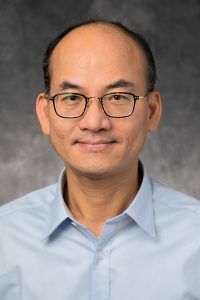
Edward W. YU
Professor
Case Western Reserve University, USA
Dr. Edward W. Yu is Interim Chair and Professor of Pharmacology at Case Western Reserve University School of Medicine. He is also Co-Leader of the Molecular Mechanisms of Resistance Research Group of the Case VA CARES Center. His research program broadly focuses on the structure, assembly, and mechanisms of the resistance-nodulation-cell division (RND)-superfamily of efflux pumps as well as their regulation. These efflux systems are key components for Gram-negative pathogens to ensure their survival in toxic environments by extruding a variety of antimicrobial agents from bacterial cells. His lab has elucidated the structures of several of these important RND-type membrane proteins with the overall goal to discover novel ways to effectively inhibit their export functions.
Department of Pharmacology, School of Medicine, Case Western Reserve University, Cleveland, Ohio
Email: ewy5@case.edu
Title
Fighting Superbugs
Multidrug resistant (MDR) bacteria is a global threat with many common infections becoming increasingly difficult to eliminate. While significant effort has gone into the development of potent biocides, the effectiveness of many first-line antibiotics has been diminished due to adaptive resistance mechanisms. Bacterial membrane proteins belonging to the resistance-nodulation-cell division (RND) superfamily play significant roles in mediating bacterial resistance to antimicrobials. They participate in multidrug efflux and cell wall biogenesis to transform bacterial pathogens into “superbugs” that are resistant even to last resort antibiotics. Here we summarize the RND class of efflux transporters, with a primary focus on the assembly and function of the inner membrane pumps. These pumps are critical for extrusion of antibiotics and toxic metal ions from the cell as well as the transport of lipid moieties to the outer membrane to establish membrane rigidity and impermeability. We analyze recently solved structures of bacterial inner membrane efflux pumps as to how they bind and transport their substrates. Our cumulative data indicate that these RND membrane proteins area able to utilize different oligomerization states to achieve particular activities, including forming MDR pumps and cell wall remodeling machineries, to ensure bacterial survival. This mechanistic insight, combined with simulated docking techniques, allows for the design and optimization of new efflux pump inhibitors to more effectively treat infections that today are difficult or impossible to cure.
References
- Long, F., Su, C.C., Zimmermann, M.T., Boyken, S.E., Rajashankar, K.R., Jernigan, R.L., and Yu, E.W. (2010). Crystal structures of the CusA efflux pump suggest methionine-mediated metal transport. Nature 467, 484-488.
- Su, C.C., Long, F., Zimmermann, M.T., Rajashankar, K.R., Jernigan, R.L., and Yu, E.W. (2011). Crystal structure of the CusBA heavy-metal efflux complex of Escherichia coli. Nature 470, 558-562.
- Su, C.C., Yin, L., Kumar, N., Dai, L., Radhakrishnan, A., Bolla, J.R., Lei, H.T., Chou, T.H., Delmar, J.A., Rajashankar, K.R., et al. (2017). Structures and transport dynamics of a Campylobacter jejuni multidrug efflux pump. Nat Commun 8, 171.
- Kumar, N., Su, C.C., Chou, T.H., Radhakrishnan, A., Delmar, J.A., Rajashankar, K.R., and Yu, E.W. (2017). Crystal structures of the Burkholderia multivorans hopanoid transporter HpnN. Proc Natl Acad Sci U S A 114, 6557-6562.
- Su, C.C., Klenotic, P.A., Bolla, J.R., Purdy, G.E., Robinson, C.V., and Yu, E.W. (2019). MmpL3 is a lipid transporter that binds trehalose monomycolate and phosphatidylethanolamine. Proc Natl Acad Sci U S A 116, 11241-11246.
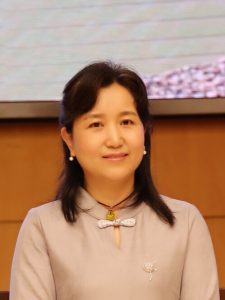
Yan ZHANG
Professor
National Natural Science Foundation of China, China
Prof. Yan Zhang received her PhD degree in 2002 from Lanzhou University. She continued her research as a postdoctoral fellow in Hong Kong University of Science and Technology (2002–2004), University of Innsbruck & Leibniz Institute of Surface Modification (IOM) e. V. (2004–2005), University of Missouri-St. Louis (2005–2006), and Auburn University (2006–2008). She began her academic career at Peking University (2008-2018). She is currently the program director of Chemical Biology in the National Natural Science Foundation of Chain since 2018.
National Natural Science Foundation of China
Email: zhangyan@nsfc.gov.cn
Title
The Initiation and Development of Chemical Biology in China
In the past decades, chemical biology has emerged as one of most attractive interdisciplinary research fields[1]. In 2002, the division of chemical biology was established in the chemistry department of Natural Science Foundation of China (NSFC). Later in 2017, the academic committee of chemical biology division was organized for assessing research proposals. Thereafter, great progress of chemical biology research has been achieved in China thanks to the Major Research Plan of NSFC, which has played important roles in terms of funding supports[2]. And the set up of independent application code of chemical biology in NSFC is one of the landmarks in the progress of the interdisciplinary subject.
NSFC always attaches great importance to international cooperation and exchange. The researchers in chemical biology field in China are mainly young scientists, thus are more energetical and creative, making it a good opportunity for cooperation and exchange world widely.
References
- Bucci M., Goodman C. , Sheppard T. L. Chem. Biol. 2010, 6, 847-854.
- Jiang H., Wu J., Zhang L., Liang W., Gao F., Du C., Feng X., Chen Y. Nat. Chem. Biol. 2008, 4, 515-518.

Yuliang ZHAO
Professor
National Center for Nanoscience and Technology, China
Professor of Chemistry, Chinese Academy of Sciences, the Director-General, National Center for Nanosciences and Technology, China. He graduated from Sichuan Univ. in 1985, and received PhD at Tokyo Metropolitan Univ. in 1999. He moved to Chinese Academy of Sciences from RIKEN in 2001.
Research Interest: He proposed the toxicity study of engineered nanomaterials in 2001, and is a pioneer with innovative ideas for initiating the study on nanosafety issues. His work focuses on biological effects/activities of nanomaterials with an emphasis on the establishment of reliable and valid analysis methods for discovering the biological effects of nanomaterials/nanomedicines in vivo, understanding of the chemical mechanisms of nanosafety and safe application of nanomaterials. These have led to an ISO standard analytical method being adapted by ISO/IEC 168 member countries, the establish nanosafety assessment framework for occupational exposure of nanomaterials, the discovery of a new-concept nanomedicine for cancer therapeutics, etc.
Before 2001, he and colleagues in Japan discovered the Element 113 (Nh) which is first new element that has been discovered in Asia and filled in the Element Periodic Table.
Publications: He published ~600 peer-review scientific papers, 8 editorials in international journals, with citation by >47,000 times (H-index 113); edited and published 13 books (3 books in English and 10 in Chinese), with his earliest efforts on systematizing the knowledge for nanosafety in category of nanomaterials, and made significant contribution to building the knowledge framework for nanosafety issue.
Prize/Awards: Ho Leung Ho Lee Foundation Science and Technology Award (2020), Outstanding Achievement award of The Chinese Academy of Sciences (2019), The elected Member of TWAS (2018), the Academician of CAS (2017), TWAS Prize in Chemistry (2016), CAS Outstanding Science and Technology Achievement Prize (2019), National Prize for Natural Sciences (2012, 2018), The Ho Leung Ho Lee Foundation Science and Technology Progress Prize (2020), China Award for Outstanding Contribution on Toxicology (2015), the 60 Years Achievement of Chinese Academy of Sciences (2009); Beijing Award for Leading Talent in Science & Technology (2014), etc. Chinese Academy of Sciences-Bayer Young Scientist Award (2006), Beijing Award for Science and Technology (2008), the National Natural Science Fund for Distinguished Young Scholars (2005), etc.
National Center for Nanoscience and Technology, China
Email: zhaoyl@nanoctr.cn
Title
Intelligent Nanorobots for Tumor Microenvironment Targeting and Antitumor Therapy
Recent development of nanotechnology on precision design and fabrication of intelligent next generation nanomedicines- intelligent nanorobots hold the great potential to revolutionize the current landscape of drug development. Tumor microenvironment plays critical roles on primary tumor maligant growth and metastasis. Targeting and regulation of tumor microenvironment via nanomedicines becomes a feasible and fruitful strategy, to improve the therapeutic outcomes for cancer treatment. This presentation will feature our recent development on using biomolecule-based nanorobots as intelligent nanomedicines to regulate tumor microenvironment to block tumor microvessels, or re-store the homeostasis of tumor stroma. Robotic molecular systems have great potential as intelligent vehicles to enable the delivery of various potent molecules, which otherwise never could be used as therapeutics due to numerous limitations. Yet, achieving in vivo, precise molecular-level, and on-demand targeting and delivery has proven extremely challenging. We developed autonomous nanorobotic systems for targeted cancer therapy, programmed to transport molecular payloads and cause on-site antitumor activities. Given the robust self-assembly behavior, exceptional designability, potent antitumor activity and minimal in vivo adversity, the nanorobots represents a promising strategy for precise drug design for cancer therapeutics.
References
- Liu S, et al., Ding B, Nature Materials, 2020 Sep 7. doi: 10.1038/s41563-020-0793-6.
- Zhang Y, Han X, Nie G, Nature Protocols, 2020, in press
- Wang J, Li Y, Nie G, Nature Reviews Materials, 2020, in press
- Li S, et al., Zhao Y, Nature Biomedical Engineering, 2020, 36(3), 258-264.
- Li S, et al., Zhao Y, Nature Biotechnology, 2018, 36(3), 258-264.
- Han X, et al., Zhao Y & Nie G, Nature Commun, 2018,9, 3690.
- Li S, et al., Nie G, Nature Biomedical Engineering, 2017, 1, 667–679.
Local Guests

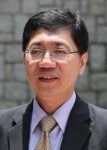
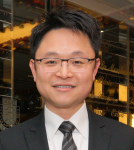


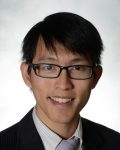

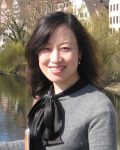

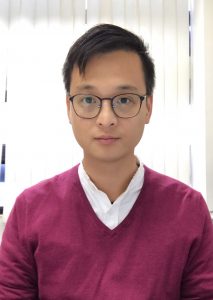
Ho Yu AU-YEUNG
Associate Professor
The University of Hong Kong
Ho Yu Au-Yeung is currently an Associate Professor in the Department of Chemistry, the University of Hong Kong. His group is interested in the chemistry of mechanically bonded molecules, molecular recognition and luminescent senesing. He has received the Croucher Innovation Award (2016), the Graeme Hanson Early Career Researcher Award (2016), Thieme Chemistry journals Award (2016), Asian Core Program Lectureship Award (Taiwan, 2018). He is a member of the inaugural Early Career Advisory Board of Chemical Review (ACS) and the Nexus of Rare Neurodegenerative Diseases.
Department of Chemistry, The University of Hong Kong, Pokfulam Road, Hong Kong
Email: hoyuay@hku.hk
Title
Designing Selective Triggers for Biologically Relevant Small Molecules and their Luminescent Detection and Imaging
Recognition and detection of small molecules in complex biological matrix is challenging. Instead of designing a host that is complementary to the neutral, generically shaped small organic molecules, identifying a distinctive chemically reactivity is another promising direction for achieving small molecule selective detection in biological samples. In this presentation, the use of metal complexes that mimic enzymatic activity for the selective recognition of small molecules such as superoxide, dopamine and ascorbate is discussed.
References
- Yu ZH, Chung CYS, Tang FK, Brewer TF, Au-Yeung HY, Chem. Commun. 2017, 53, 10042-10045
- Tong KY, Zhao J, Tse CW, Wan PK, Rong J, Au-Yeung HY, Chem. Sci., 2019, 10, 8519-8526
- Yu ZH, Reinhardt CJ, Wong THF, Tong KY, Chan J, Au-Yeung HY, Chem. Eur. J., 2020, 26, 8794-8800
- Au-Yeung HY and Tong KY, Metals in Probes for Neurobiology and Neurodegenerative Diseases in Metal Ions for Life Sciences, Volume 22, De Gruyter, Berlin, Germany (in production)
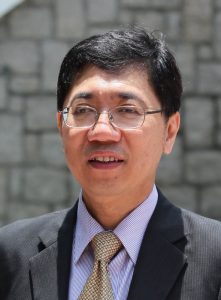
Chi-Ming CHE
Chair Professor
The University of Hong Kong
Prof. Chi-Ming Che obtained his Ph.D. from The University of Hong Kong in 1982. After his study with Prof. Harry B. Gray at The California Institute of Technology during 1980 to 1983, he joined the Department of Chemistry of The University of Hong Kong and is presently the Zhou Guangzhao Professor in Natural Sciences. Prof. Che is an Academician of the Chinese Academy of Sciences (1995), International Member (Foreign Associate) of the US National Academy of Sciences (2013) and Fellow of the World Academy of Sciences (2007). His honors include the First Class Prize of the State Natural Science Award of China (2006), Centenary Prize of Royal Society of Chemistry (2013), Davison Lectureship at Massachusetts Institute of Technology (2013), The Huang Yao-Zeng Organometallic Chemistry Award of the Chinese Chemical Society – Lifetime Achievement Award (2016), Ryoji Noyori ACES Award (2016), Peiyang Lecture at Tianjin University (2018), “Tsinghua Xuetang” Lecture at Tsinghua University (2019), Nankai Centenary Lecture at Nankai University (2019), Master Distinguished Lecture at Shanghai Jiao Tong University (2019), Luigi Sacconi Medal (2020).
Prof. Che’s research interests include synthetic chemistry; iron catalysis; metal catalyzed oxidative C=C and C–H functionalization reactions; reactive metal-ligand multiple bonded complexes; photochemistry of transition metal complexes; phosphorescent metal emitters and metal-TADF emitters for OLED and biosensor applications; Chemical Biology of Anti-Cancer Metal Medicines and Tradition Chinese Medicines for cancer treatment.
State Key Laboratory of Synthetic Chemistry and Department of Chemistry, The University of Hong Kong, Pokfulam Road, Hong Kong, China
Email: cmche@hku.hk
Title
Gold and Platinum Compounds with Porphyrin and N-Heterocyclic Carbene Ligands for Anti-Cancer and Biosensing Applications
Platinum-based DNA-targeting compounds including cisplatin, oxaliplatin and carboplatin remains standard of care for many types of cancer but they may not be therapeutically effective owing to their rather low selectivity between normal and cancerous cells, and inability in eradicating residual cancer stem cells, drug resistance and metastasis. We have employed ligands with N donor atoms such as porphyrins and C donor atom(s) such as N-heterocyclic carbenes (NHC) to construct cationic gold(III) and platinum(II) complexes, and identified several compounds that exhibit potent cytotoxicity toward cancer cells and in vivo anti-tumor activities in multiple mice models of cancer including the cisplatin resistant and the metastatic ones. These metal complexes hold promise as new generation of anti-cancer targeted metal medicines. The mechanisms of action of these metal complexes are distinct from existing clinically used platinum compounds with the molecular targets identified by click chemistry tools, transcriptomics and/or unbiased thermal proteome profiling, demonstrating the engagement of multiple cancer-driving protein targets via non-covalent interactions and/or metal-protein thiol coordination. Besides, we have uncovered that for some gold(III) porphyrin scaffolds that show effective anti-tumor activities, the periphery of the porphyrin ligands can be activated by the electrophilic gold(III) center to selectively form covalent adducts with protein thiols, representing a new mode of biomolecular interaction that can be exploited for anti-cancer applications. For biosensing application, the rich luminescent properties of platinum(II) NHC complexes can be exploited for intracellular tracking and for detection of specific biomolecular structures owing to drastic changes in both emission wavelength and intensity upon subtle change in local microenvironment. We have developed a series of luminescent platinum(II) NHC complexes for detection of mismatched DNA, G-quadruplex, specific protein conformations/aggregates and differential cell labelling for disease analysis.
We acknowledge the support from the Innovation and Technology Fund (ITS/488/18) and Platform Technology Fund of HKU.
References:
- K.C. Tong, C.N. Lok, P.K. Wan, D. Hu, Y.M.E. Fung, X.Y. Chang, S. Huang, H. Jiang, C.M. Che. An Anticancer Gold(III)-Activated Porphyrin Scaffold That Covalently Modifies Protein Cysteine Thiols. Proc. Natl. Acad. Sci. 2020, 117:1321-1329.
- D. Hu, C. Yang, C.N. Lok, F. Xing, P.Y. Lee, Y.M.E. Fung, H. Jiang, C.M. Che. An Antitumor Bis(N-Heterocyclic Carbene)Platinum(II) Complex That Engages Asparagine Synthetase as an Anticancer Target. Angew. Chem. Int. Ed., 2019, 58: 10914-10918.
- S.K. Fung, T. Zou, B. Cao, P.-Y. Lee, E. Y.M. Fung, D. Hu, C. N. Lok and C.M. Che. Cyclometallated Gold(III) Complexes Containing N-Heterocyclic Carbene Ligands Engage Multiple Anti-Cancer Molecular Targets. Angew. Chem. Int. Ed., 2017, 56: 3892-3896
- S. K. Fung, T. Zou, B. Cao, T. Chen, W. P. To, C. Yang, C. N. Lok, C. M. Che, Luminescent Platinum(II) Complexes With Functionalized N-Heterocyclic Carbene Or Diphosphine Selectively Probe Mismatched And Abasic DNA. Nat. Comm., 2016, 7,10655
- D. Hu, Y. Liu, Y.S. Lai, K.C. Tong, Y.M. Fung, C. N. Lok, C.M. Che, Anti-cancer Gold(III) Porphyrins Target Mitochondrial Chaperone Hsp60. Angew. Chem. Int. Ed. 2016, 55, 1387-1391
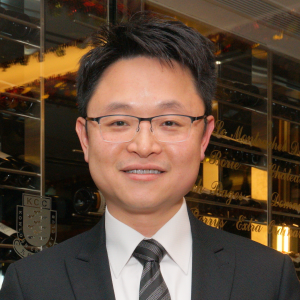
Kenneth Kam-Wing LO
Professor
City University of Hong Kong
Professor Kenneth Kam-Wing Lo obtained his BSc and PhD degrees at The University of Hong Kong. His PhD work centered on luminescent transition metal complexes as molecular probes and the photophysical studies of luminescent coinage metal chalcogenide complexes. He worked as a Croucher Foundation Postdoctoral Research Fellow in Inorganic Chemistry Laboratory, University of Oxford and carried out research work on the electrochemical properties of engineered cytochrome P450cam and putidaredoxin. He joined the Department of Biology and Chemistry (currently Department of Chemistry) of City University of Hong Kong in 1999 and became Professor in 2011. His research interest is the utilization of luminescent inorganic and organometallic transition metal complexes as biomolecular and cellular probes, with a focus on the development of intracellular sensors, photoactive labels, and bioimaging reagents. He received The APA Prize for Young Scientist from The Asian and Oceanian Photochemistry Association in 2005, The Distinguished Lectureship Award from The Chemical Society of Japan in 2011, and a Croucher Senior Research Fellowship from the Croucher Foundation in 2015. He served as an Associate Editor of RSC Advances from 2015 to 2020 and is currently an Associate Editor of Inorganic Chemistry.
Department of Chemistry, City University of Hong Kong, Tat Chee Avenue, Hong Kong, P. R. China
Email: bhkenlo@cityu.edu.hk
Title
Biomolecular Probes and Cellular Reagents Derived from Photofunctional Rhenium(I), Ruthenium(II), and Iridium(III) Polypyridine Complexes
The interactions of transition metal complexes with biological molecules such as nucleic acids and proteins have been of long-standing interest. However, the applications of luminescent transition metal complexes in intracellular sensing and bioimaging have not been focused upon until recently. We are interested in the photophysical and photochemical characteristics of photoactive transition metal polypyridine complexes since they offer new opportunities for the development of innovative diagnostic and therapeutic reagents. Of particular importance is the environment-sensitive luminescence, photoactivatable characteristics, and singlet oxygen photosensitization properties of these metal complexes. In this presentation, our strategies in the development of luminescent rhenium(I), ruthenium(II), and iridium(III) polypyridine complexes as intracellular sensors for small molecular targets, photocytotoxic agents, and phosphorogenic bioorthogonal probes for live cells will be introduced. The focus will be on the photophysical and photochemical properties, cytotoxic activity, cellular uptake behavior, and intracellular localization and applications of these photofunctional transition metal complexes.
References
- Yip AMH, Lo KKW, Coord Chem Rev 2018, 361, 138-163.
- Lo KKW, Acc Chem Res 2020, 53, 32-44.
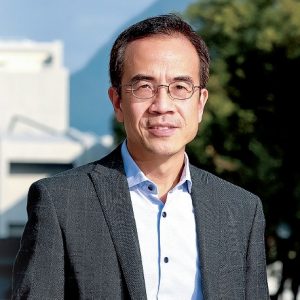
Dennis Kee Pui NG
Professor
The Chinese University of Hong Kong
Dennis K. P. Ng received his BSc (1988) and MPhil (1990) from The Chinese University of Hong Kong (CUHK) and DPhil (1993) from the University of Oxford. He became a Research Fellow in Chemistry at the California Institute of Technology (1993-1994) before returning to his alma mater. He is presently a Professor, holding a concurrent appointment of Pro-Vice-Chancellor/ Vice-President at CUHK. His current research interests lie in the chemistry of functional dyes, particularly phthalocyanines and boron dipyrromethene derivatives, focusing on their biomedical applications.
Department of Chemistry, The Chinese University of Hong Kong, Shatin, N.T., Hong Kong, China
Email: dkpn@cuhk.edu.hk
Title
Selective Imaging and Eradication of Senescent Cells with b-Galactosidase-Activated Fluorescent Probes and Photosensitizers
Aging is the main risk factor for human diseases. It represents the progressive loss of tissue and organ function along with time. It has been revealed that this natural process is closely related to cellular senescence, which is a permanent state of cell cycle arrest induced by disparate stress factors.1 Apart from not being able to contribute to tissue repair through cell division, the senescent cells disrupt normal tissue function by promoting secretion of a range of senescence-associated secretory phenotype factors.2 Accumulation of senescent cells during the aging process also damages the tissues in which they reside and is directly linked to features of natural aging.3 Hence, selective detection and elimination of senescent cells are crucial in tackling this universal problem from the biomedical perspective. We report in this presentation a series of boron dipyrromethene-based fluorescent probes and photosensitizers that can be specifically activated by b-galactosidase, which is a common biomarker of senescence,4 for imaging and photodynamic eradication of senescent cells.
This work was supported by a grant from the Research Grants Council of the Hong Kong Special Administrative Region (Project No. 14307518).
References
- Campisi, J.; d’Adda di Fagagna, F. Nat. Rev. Mol. Cell Biol. 2007, 8, 729-740.
- Ohtani, N.; Hara, E. Cancer Sci. 2013, 104, 525-530.
- Childs, B. G.; Durik, M.; Baker, D. J.; van Deursen, J. M. Nat. Med. 2015, 21, 1424-1435.
- Sharpless, N. E.; Sherr, C. J. Nat. Rev. Cancer 2015, 15, 397-408.
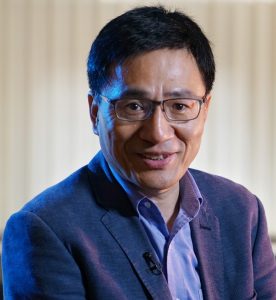
Hongzhe SUN
Chair Professor
The University of Hong Kong
Hongzhe Sun is an Norman & Cecilia Yip Professor in bioinorganic chemistry and Chair Professor of Chemistry. His research work lies in the cutting edge between inorganic chemistry and biology/medicine, particularly in metallobiology and overcoming antimicrobial resistance as well as the use of metalloproteomics for uncovering metal-proteins interactions at proteome-wide scale.
Department of Chemistry, The University of Hong Kong, Pokfulam Road, Hong Kong SAR, P.R. China
Email: gbjiang@rcees.ac.cn
Title
Fighting against Infections by Superbugs: Metallodrugs as Antibiotic Resistance Breaker
Antibiotic resistance occurs when bacteria adjust in response to the misuse or overuse of these medicines and it has become one of the biggest public health challenges in this era. At least 2.8 million people get an antibiotic-resistant infection annually in the US, and more than 35,000 people die from it. Metal compounds have long been used in medicine and healthcare, and may represent a rich source of antibiotics and/or antibiotic resistance breaker (ARB) (1). We have developed an integrative metalloproteomics approach to identify metal-associated proteins using bismuth, silver and gallium as an example (2) as well as to quantify the metals for rapid metallome/proteome-wide profiling of metal-binding proteins as well as uncovering their mechanism of action.
Based on our integrative metallomic approach, we have found that Bi(III) interfere with Zn(II) biochemistry in pathogens. We found that Bi(III) compounds are antibiotic resistance breakers (ARB) to inhibit metallo-β-lactamases (MBLs). Infections caused by metallo-β-lactamases (MBLs), e.g., New Delhi metallo-β-lactamase 1(NDM-1) producing bacteria are extremely difficult to treat (4). We show that an anti-ulcer agent, colloidal bismuth subcitrate (CBS), and related Bi(III) compounds irreversibly inhibit different types of MBLs. CBS restores meropenem (MER) efficacy against MBL-positive bacteria in vitro, and in animal infection models (5). We demonstrate a high potential of Bi(III) compounds as the first broad-spectrum MBL inhibitors to treat MBL producing bacterial infection in combined use with existing carbapenems. Very recently, we have identified that auranofin (AUR) serves as a dual inhibitor of metallo-β-lactamases (MBLs) and mobilized colistin resistance (MCRs), two resistance enzymes that have distinct structures and substrates. Combination therapy comprising AUR and colistin is highly effective in eradicating multidrug-resistant bacteria in peritonitis infection model. Our work provides an insight into development of inorganic pharmaceutics and new therapeutic approach for superbug infections.
We thank the Research Grants Council of Hong Kong (R7070-18) and the University of Hong Kong (URC and Norman and Cecilia Yip Foundation) for support.
References
[1] A. Frei, J. Zuegg, A. G. Elliott, M. A. T. Blaskovich et al, Chem Sci, 2020, 11, 2627-2639.
[2] Y.C. Wang, B.J. Han, Y.X. Xie, H.B. Wang, R.M. Wang, X. Xia, H. Li, H. Sun, Chem Sci 2019, 10, 6099-6016.
[3] A.M. King, S.A. Reid-Yu, G.D. Wright, et al, Nature 2014, 510, 503-506.
[4] R.M. Wang, T.P. Lai, P.L. Ho, R.Y. Kao, H. Li, H. Sun et al, Nat Commun 2018, 9, 439.
[5] H. Sun, Q. Zhang, R. Wang, H. Wang, Y. T. Wong, M. Wang, Q. Hao, A. Yan, R. Y. Kao, P. L. Ho and H. Li, Nat Commun, 2020, 11, 5263.

Edmund Chun Ming TSE
Assistant Professor
The University of Hong Kong
Dr. Edmund Tse is curently an Assistant Professor in the Department of Chemistry at the University of Hong Kong. His group focuses on cross-disciplinary topics at the interface between bioinorganic and electroanalytical chemistry that has implications in the fields of biomarker discovery, DNA-protein interaction, redox-active cofactor identification, metalloprotein detection, point-of-care sensors, and biofilm removal. He has received the RGC Early Career Scheme (2020), the NSFC Young Scientists Fund (2020), and the HHY Physical Sciences Research Fund (2019). He is a review editor of Frontiers in Catalysis and a member in the CAS-HKU Joint Laboratory of Metallomics on Health and Environment.
CAS-HKU Joint Laboratory of Metallomics on Health and Environment, Department of Chemistry, University of Hong Kong, Pokfulam Road, HKSAR, China
Email: ecmtse@hku.hk
Title
Deciphering the Biological Roles of Iron-Sulfur Clusters and Phenazines in DNA Repair, Redox Signaling, and Electron Transfer Processes
Redox homeostasis plays an important role in biological systems. Recently, metallocofactors such as iron sulfur (FeS) clusters were found to play key regulators in DNA replication and repair processes. Endonuclease III (EndoIII) contains redox-active [4Fe4S] clusters, but the biological implications of the metallocofactors remain elusive. In this talk, results from microscale thermophoresis (MST) experiments, atomic force microscopy (AFM) studies, electroanalytical assays, and biophysical modelling will be presented to elucidate the binding interactions between EndoIII and DNA at the molecular level. The knowledge gained from this redox-signaling study can be applied to the understanding of the critical functions of [4Fe4S] clusters in genome maintenance and cancer prevention. Toward the end of the talk, data from a pilot study to establish the relationship between extracellular phenazines and biofilm formation and growth will be discussed. In summary, redox biochemistry and electron transfer processes in cells and extracellular matrix (ECM) will be explored.
References
- Saunders, S. H.; Tse, E. C. M.; Yates, M. D.; Otero, F. J.; Trammell, S. A.; Stemp, E. D. A.; Barton, J. K.*; Tender, L. M.*; Newman, D. K.* Cell 2020, 182, 1-14.
- Li, L.; Liang, J.; Luo, H.; Tam, K. M.; Tse, E. C. M.*; Li, Y.* Chem. Commun. 2019, 55, 12340-12343.
- Tse, E. C. M.; Zwang, T. J.; Bedoya, S.; Barton, J. K.* ACS Cent. Sci. 2019, 5, 65-72.
- Zwang, T. J.; Tse, E. C. M.; Barton, J. K.* ACS Chem. Biol. 2018, 13, 1799-1809.
- Tse, E. C. M.‡; Barile, C. J.‡; Li, Y.; Zimmerman, S. C.; Hosseini, A.; Gewirth, A. A.* Phys. Chem. Chem. Phys. 2017, 19, 7086–7093.
- Barile, C. J.‡; Tse, E. C. M.‡; Li, Y.; Gewargis, J. P.; Kirchschlager, N. A.; Zimmerman, S. C.; Gewirth, A. A.* Biophys. J. 2016, 110, 2451–2462.
- Tse, E. C. M.; Zwang, T. J.; Barton, J. K.* J. Am. Chem. Soc. 2017, 139, 12784–12792.
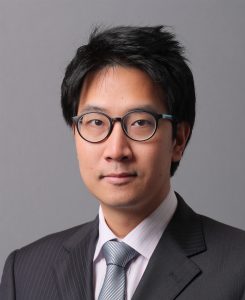
Vince VARDHANABHUTI
Clinical Assistant Professor
The University of Hong Kong
Dr Vince Vardhanabhuti completed his medical degree at Guy’s, King’s and St Thomas’ School of Medicine London, in the UK in 2005. He had subsequent training in London, Oxford, Plymouth, Exeter, and completed his Radiology training at Imperial College London, UK whilst also completing a PhD during his residency. He has been working as a Clinical Assistant Professor at the Department of Diagnostic Radiology at HKU since 2014. He has wide-ranging interests relating to spectral computed tomography, cancer imaging, big data, machine learning, and artificial intelligence with the goal of early clinical translation to benefits patients.
Department of Diagnostic Radiology, Faculty of Medicine, HKU
Email: varv@hku.hk
Title
Imaging of Metal-based Contrast Agents in Spectral CT
Two recent innovations with CT technology stand to have a major impact on the use of metal-based agents in medical imaging. First is the innovation relating to the detectors that receive and process the x-ray beam. The new detector design is called “photon-counting detector” which capture the x-ray beam one photon at a time and at a very high resolution. This means it captures information at finer details (i.e. higher resolution) than traditional CT scanners. Second, the “spectral” component means that multiple energies of x-ray beams can now be used, compared to traditional CT which usually only uses a single energy beam. The advantage is that this allows for better discrimination of different materials. Metals such as iodine, manganese, gold, or gadolinium have similar attenuation on conventional single energy CT and cannot be differentiated. However, with the combined use of these recent technologies, it now becomes possible to better discriminate these different metals, as well as quantifying the amount non-invasively in the body. This has led to potential new practices such as the development of novel contrast agents for spectral CT.
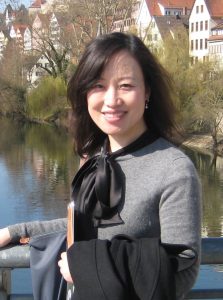
Aixin YAN
Associate Professor
The University of Hong Kong
Dr. Aixin Yan graduated from Peking University with a Ph.D. in Bioorganic Chemistry. Following Postdoc training in SUNY-Stony Brook, Duke University, and University of Wisconsion-Madison, she joined The University of Hong Kong as an Assistant Professor in the School of Biological Sciences in 2008. She was promoted to a tenured Associate Professor in 2014. She held a position of Specially Appointed Associate Professor at Osaka University from 2014 to 2016. Research in her group focuses on antimicrobial resistance (including heavy metal resistance), CRISPR-Cas genome editing, and Host-Pathogen Interface.
School of Biological Sciences, The University of Hong Kong
Email: ayan8@hku.hk
Title
The Cross-talk of Zn, Fe, and Cu Homeostasis in E. coli
Transition metals serve as an important class of micronutrients that are indispensable for bacterial physiology but are cytotoxic when they are in excess. Bacteria have developed exquisite homeostatic systems to control the uptake, storage, and efflux of each of biological metals and maintain a thermodynamically balanced metal quota in the cell. However, interplay of the pathways that control the homeostasis of different biological metals and its implications for metal-based immunity and antimicrobial treatment remain largely elusive. Here, we report that zinc (Zn) excess perturbs iron (Fe) and copper (Cu) homeostasis in Escherichia coli, resulting in increased Fe and decreased Cu levels in the cell. Gene expression analysis revealed that Zn excess transiently up-regulates Fe-uptake genes and down-regulates Fe-storage genes and thereby increases the cellular Fe quota. In vitro and in vivo protein–DNA binding assays revealed that the elevated intracellular Fe poisons the primary Cu detoxification transcription regulator CueR, resulting in dysregulation of its downstream genes copA and cueO and activation of the secondary Cu detoxification system CusSR-cusCFBA. Supplementation with the Fe chelator 2,2’-dipyridyl (DIP) or with the reducing agent glutathione abolished the induction of cusCFBA during Zn excess. Consistent with the importance of this metal homeostatic network in cell physiology, combined metal treatment, including simultaneously overloading cells with both Zn (0.25 mM) and Cu (0.25 mM) and sequestering Fe with DIP (50 μM), substantially inhibited E. coli growth. These results advance our understanding of bacterial metallobiology and may inform the development of metal-based antimicrobial regimens to manage infectious diseases.
References
Xu Z, Wang P, Wang H, Yu ZH, Au-Yeung HY, Hirayama T, Sun H, Yan A* Zinc excess increases cellular demand for iron and decreases tolerance to copper in Escherichia coli, The Journal of Biological Chemistry 2019, 294(45) 16978-16991.
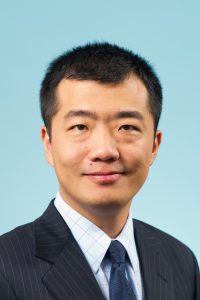
Guangyu ZHU
Associate Professor
City University of Hong Kong
Prof. Guangyu Zhu obtained his B.Sc. in Chemistry from Peking University (2002), where he developed a strong passion for biological chemistry and drug discovery. He moved to the United States and obtained a Ph.D. in Biological Chemistry from the Department of Chemistry at the University of Pittsburgh (2007), where he was working on anticancer drug development and discovery. He subsequently did his postdoc at Massachusetts Institute of Technology (MIT) with Prof. Stephen J. Lippard working on the mechanism of action of cisplatin, one of the most widely used chemotherapeutic drugs in the clinic. He joined the City University of Hong Kong in 2011 and now he is an Associate Professor. Prof. Zhu’s research interest lies at the interface of chemistry and biology, focusing on anticancer drug development and mechanism. His current research projects include synthesis and biological evaluation of novel metal-based anticancer agents, development of cancer-specific nanomedicine to conquer cisplatin resistance, and screening of biologically active small-molecule anticancer agents and their target validation, by using interdisciplinary approaches and methods in the areas of biological chemistry, medicinal chemistry, molecular biology, and chemical biology.
Department of Chemistry, City University of Hong Kong, Hong Kong SAR, P. R. China
Email: guangzhu@cityu.edu.hk
Title
Development of Pt(IV) anticancer prodrugs than can be controllably activated by visible light
Despite the broad clinical applications of platinum-based anticancer drugs including cisplatin, their side-effects and resistance issues have encouraged researchers to look for novel metal-based anticancer complexes. Non-traditional platinum compounds especially Pt(IV) complexes have been extensively studied and they hold great promise to be further developed as the next-generation platinum drugs.[1] Selective activation of prodrugs within a tumor is particularly attractive because of their low damage to normal tissue. In this presentation, I will introduce the design, photoactivation mechanism, and antitumor activity of visible light-activatable Pt(IV) prodrugs.[2,3] These small-molecule prodrugs have controllable activation property: they are shown to be inert in the dark but under short-period irradiation with low intensity of visible light, without the need of any external catalyst, the prodrugs are rapidly reduced. The prodrugs display superior antitumor activity both in vitro and in vivo in human carcinoma models. The controllable activation property and superior antitumor activity of these prodrugs may suggest a novel strategy for the design of visible light-activatable platinum prodrugs to reduce the adverse effects and conquer drug resistance of traditional platinum chemotherapy.
References
- Wang Z., Deng Z., Zhu, G, Dalton Trans 2019, 48, 2536-2544. [Invited Review and Cover Article]
- Wang Z., Zhu, G, et al. Chem 2019, 5, 3151-3165
- Deng Z., Zhu, G., et al. J Am Chem Soc 2020, 142, 7803-7812 [Supplementary Cover]
